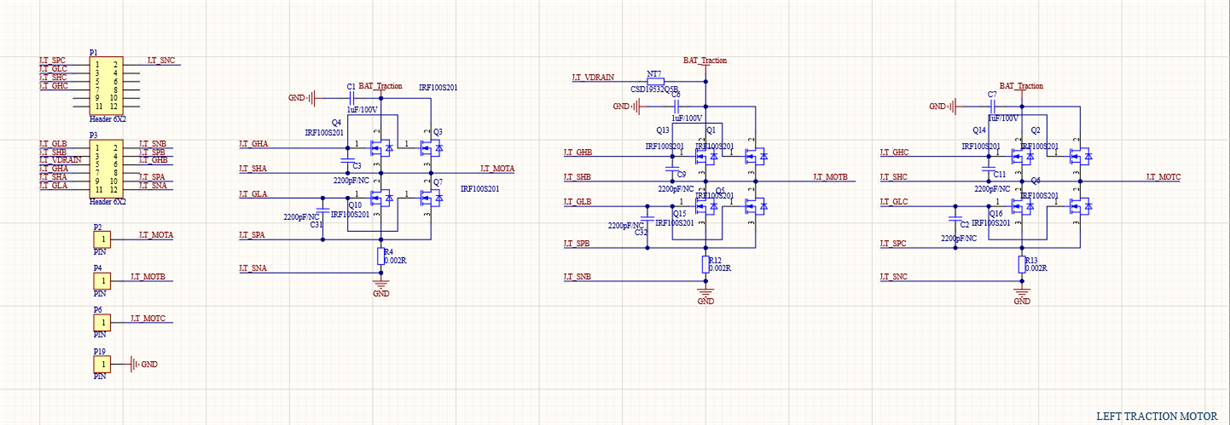Other Parts Discussed in Thread: TIDA-00774
Hi Team,
Customer uses DRV8353S to drive three-phase brushless motors with Hall.
1. At present, 2 chips have been burned, both of them are short-circuited in the lower bridge of the chip, and GLx and SPx are short-circuit. 147K at normal, about 5 ohms after short circuit. The chip is hot and the current is large.
2. The brushless motor can rotate, but the current is very large at low speed, about 1A. Brushless motor is small at high speed, about 0.5A. When the speed is low, the current of about 1A is obtained when the three phases of the motor are removed.
Customer would like to know how to resolve this issue?
Thanks,
Annie




